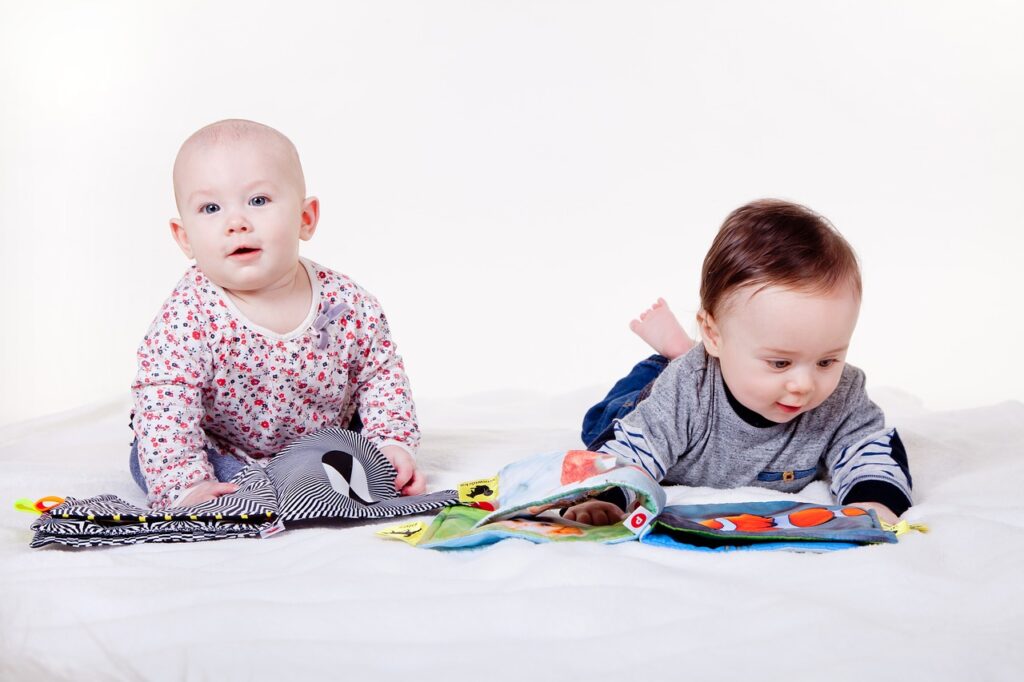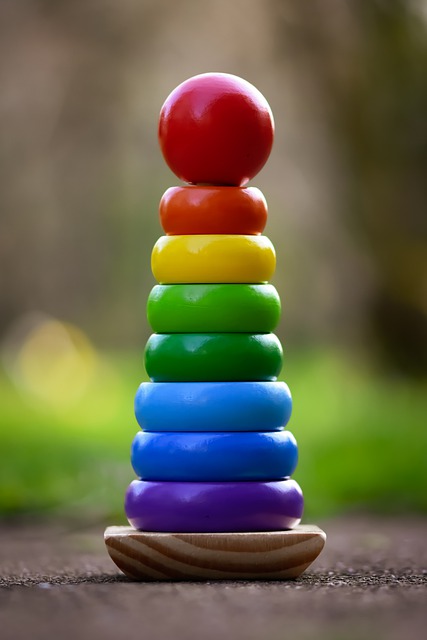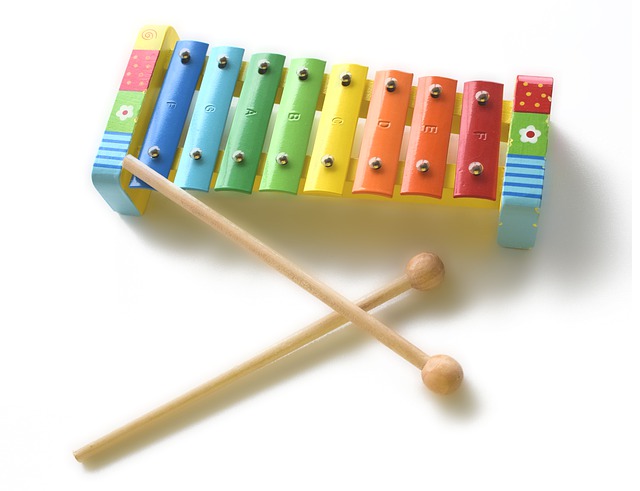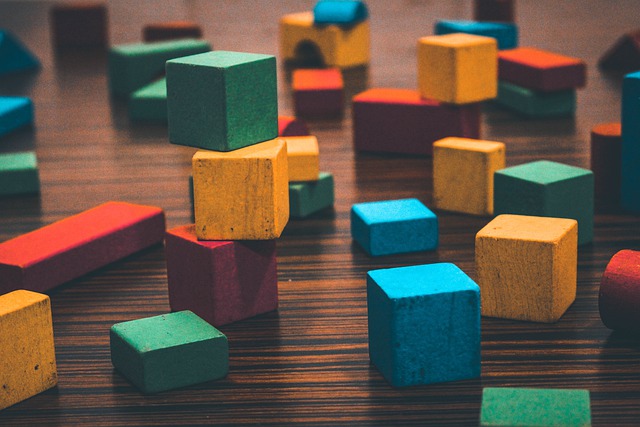Montessori Toys – The Answers You Need to Know
Montessori philosophy is based on the idea that children learn through exploration and discovery. That’s why Montessori classrooms are filled with natural materials like wood, metal, cotton, wool or even rock. These materials allow children to develop their creativity and problem-solving skills as they’re learning about materials and their physical properties.
What Are Montessori Toys?
Maria Montessori favored toys and books that were rooted in reality, not pretend. This means if you choose between a figurine that’s a cartoon-like image of, say, a cow, and a realistic one, it’s always best to go with the one that’s based in the real world.
Montessori-friendly toys are an excellent way to introduce your little one to the world of learning and development, keeping their attention for longer periods. Montessori-friendly toys encourage your child’s imagination and creativity, as well as social skill development. They also provide various options for sensory exploration, from auditory to visual stimulation.
Choose a toy that is durable and appropriate for your child. One of the first things to consider is the age range: what age does it target? It should also be made from quality materials and should not contain any hazardous or toxic chemicals.
When it comes to toys, the best option is usually a single-skill toy. Single-skill toys can be further broken down into certain categories: puzzle, teething toy, rattle, pounding bench, shape sorter and more.
Examples of Montessori Educational Toys
The educational toys of the Montessori method are meant to develop a child’s instinctive and intuitive learning abilities. These educational toys have been designed with the underlying philosophy of Montessori in mind. They can be used to engage children in a range of activities, from building and socializing to learning and playing.
You might need some examples of Montessori educational toys. So, we will give you some of the most popular by providing interesting facts and information about.
Grabbing Toy
This classic rattle and teether is a perfect first Montessori-inspired toy for your baby. Thanks to its light weight and unique shape, it’s easy for even the tiniest hands to grab onto and explore. The gentle rattle noise and the squishy structure make for the perfect first sensory learning experience.
Sensory toys
This classic rattle and teether is a perfect first Montessori-inspired toy for your baby. Thanks to its light weight and unique shape, it’s easy for even the tiniest hands to grab onto and explore. The gentle rattle noise and the squishy structure make for the perfect first sensory learning experience.

Teething toys
Teething toys are an ideal solution for tiny sore gums. This whimsical teether combines all-natural beech wood and beads made from food-grade silicone. It’s easy for your baby to grab, and it can be washed with running water and mild soap when it starts to get icky. The unique shape makes it easy to grasp while also.
Board book
The Montessori method is a unique approach to child education that follows the philosophy of the Italian educator Maria Montessori. It seeks to develop children in an environment with limits and support so they feel safe, secure, and challenged in their learning. This board book more than fits the bill, featuring 100 simple first words along with corresponding photographs.
Stacking Toy
Montessori is the method of education that emphasizes the importance of freedom, independence, and choice in learning. This method allows children to develop the skills they need to do things for themselves so they can be more effective learners. Stacking toys help young children unlock the earliest of math concepts by introducing them to concepts like size, shape and sorting.

Musical Instruments

This interactive musical toy will help your baby explore cause and effect while hearing the different instruments. Watch them grow in comprehension of their environment, picking up on all of the sounds they hear. It has four different instruments built into one piece with a 7-key xylophone, drum, cymbal and washboard. This is sure to please any parent!
Puzzle
Montessori materials should strike a good balance for a young child; they should be challenging, but not overwhelming to a curious new learner. This wooden shape puzzle is the perfect introduction to problem solving for an older baby or younger toddler. Made from maple and cherry wood, the shapes are chunky and easy to grab.
Blocks
Montessori-friendly products are built to support your child’s development. This set of wooden blocks from Melissa & Doug is an example of the high quality, non-toxic products that Montessori has been using for decades. Your baby can build, imagine, develop motor skills and even experiment with math and physics concepts without the worry of what chemicals might be in their.

Hammer Toy
Montessori toys are designed to help children develop the skills they need to become successful in life. They promote creativity, coordination, and imagination – all crucial for learning how to problem-solve and grow their own values. Not only are these toys beautiful, but they also provide a fun experience with educational value.
What Is Montessori’s Pikler Triangle?
Pikler triangle is a piece of furniture that uses design and function to create an attractive new space. It has 3 legs, giving it the appearance of a triangle, but it functions as a table, desk, or shelf. This is achievable because of its versatile design. The pikler can even be rotated into position for cooking on the stovetop!
The Triangle is a versatile and durable activity toy that will give your child a perfect workout, as well as a fun new way to play with their friends. It’s designed with safety and sustainability in mind, hand-crafted in the U.S., and made from durable materials like silicone and foam for longevity. As your child grows, the size and weight of the triangle should be adjusted to accommodate their needs.
Hungarian pediatrician Dr. Emmi Pikler developed the Pikler Triangle over 100 years ago. She believed kids should explore the Pikler triangle on their own terms. If they can climb it, they should be able to do so freely. It can be used for children as young as 6 months to approx. 5 years old. The Pikler Triangle allows children.
The point of the triangle is that it doesn’t need to be adjusted as your child grows, because it works as the foundation on which they reach developmental milestones. For example, babies can first play underneath it. Once they’re ready, they can use it to pull themselves up, then climb the structure. They can use their imagination and learn new skills.
On the other hand, the triangle is designed to grow with your child and adjust as they change. It’s also made from a composite material that resists wear, tear, and weathering. The stability of the shape allows children to develop motor skills and dexterity.
A child’s imagination and creativity are the fuel that drives them to learn new things each day. So when it comes to building a climbing frame or treehouse, don’t be afraid to push your child to build something they’re not sure how to create yet.
Why To Choose Montessori Kitchen?
Some parents are hesitant to allow a play kitchen in their classroom because they feel it takes up too much room, is not appropriate for the age of the children, and does not provide an opportunity for learning. One problem with this argument is that it assumes that learning only happens in the classroom. Another issue is that it assumes that play kitchens are always toys.
Children not only get more out of this experience, but they typically prefer it. Kids at 18 months, prefer practical life work more than anything else. Their favorite activities are the ones she sees us doing every day: putting dishes away, washing hands, pouring water, helping prepare food, and cleaning up (sometimes making a mess just to do so). Parents can clearly see children’s focus, satisfaction, and pride as they do these tasks. An example is presented by the mother of an 18 months girl whose attention has been focused on Montessori kitchen science day one:
“D. is now able to make water for her squirt gun with just a few clicks on the side of the kitchen. There are no more worries about spilling water down the kitchen sink or having it spill onto her play mat. She can fill the sink with water, pump a little soap from this soap dispenser, and wash her hands or dishes. It took a few tries to find a water dispenser that fit this kitchen and didn’t arrive broken(!), but we are so happy with the final result. Though she still needs some assistance turning the water on and pumping out soap.”
What do you think? Will you invest in the skills of your beloved child? Why not consider using more effective and productive toys, which will be 100% helpful in a long term behavior.
Montessori Floor Bed
Before having children of our own, we were nervous about how to plan their nursery. We want the perfect space for them that would give them freedom of movement and foster independence. Floor beds give us that freedom with a modern style that still feels like home.
For babies still in their cribs, parents should have a transition plan. Come up with a safe transition between the crib and the pack n’ play that will keep your child safe and happy. Let’s see what mothers share on social media. The first one is the mom of K. who says:
“I hadn’t initially thought about how convenient it would be to nurse through the night, laying beside her and slipping away as she stayed sound asleep. But now that I am, I understand the benefits of co-sleeping. It will make for a smoother transition to the floor bed in the future. She’s been on the floor for about 4 months now, and it’s been really easy to transition. In fact, she sleeps in her space all the time. Before that, she napped on me, slept with us in the rocking chair, and napped on her own in a bassinet or pack n’ play. I was so nervous about her rolling off the bed.”
Montessori For Babies
Montessori is a set of principles that can be applied from birth. It’s designed with the needs of the child in mind and is focused on teaching children to learn with their own natural curiosity. Montessori is not structured, but rather facilitates discovery through creative play and exploration. There are many ways to make Montessori work for your family, from using Montessori’s principles and method of learning.
Montessori Education is a proven system for giving children the benefits that are often lost in traditional classrooms. The Montessori method of learning emphasizes independent problem solving, deep, conceptual understanding, and creativity. It also teaches children how to appreciate their own unique abilities and provides them with opportunities to explore their interests.
A baby’s unconscious mind is their most important asset. They are taking in impressions of the world around them without any effort. Plus, they absorb the good as easily as the bad. What do you think an infant’s most important need is? It’s for love. A baby has an unconscious absorbent mind that is taking in impressions of the world around them without any effort.
These ideas, which we can find in any Montessori books and toys, were created for parents and caregivers, but they also make the perfect gift for someone who has a new baby at home.
Montessori Materials For Babies
The natural materials we use in all presented furniture and products, such as wood, rubber, metal, paper, and different fabrics, are valuable to the whole concept of Montessori. Children love to grasp and explore these materials, particularly with their mouths.
When you let your child explore household items, they can learn about the sensory experiences of materials and how they feel. Items from the toy kitchen to a microscope can get your children excited about learning. You’ll also get a lot more use of these toys, and will wonder why you didn’t do this sooner!
When choosing a gift, such as a toy, it’s important to know what your child will use the toy for. If they are grasping at a bracelet, offer more grasping opportunities. When they start to pull up, set up the environment to have more opportunities to pull up in their space.
What Outdoor Montessori Toys Are Available At Stores?
Outdoor play helps children develop their motor skills and creativity at the same time. They get to learn how to work with their hands and build relationships with other children, their community, and nature. It’s a great way for parents to get out of the house and bond with their children and it has many benefits for kids, too. There are many different outdoor toys that are perfect for Montessori kids. Outdoor toys will give your child a chance to experience the world, and help them develop their senses. Outdoor toys also encourage open-ended play, which is what Montessori education is about.
“Practical Life” is a big deal in Montessori.
Giving a child items that help them accomplish real tasks is not only beneficial to their development, but it provides them with a lot of fun, as well. The more practical skills they learn now, the more practical life will become as they grow up.
A kids gardening set with tools that really work can provide independence while helping with gardening tasks and it’s also wonderful for imaginative play. With a wide range of different tools, your children will be able to create all kinds of gardening adventures in their backyard.
Examples of Outdoor Montessori Toys & Tools
A mud kitchen offers a great opportunity for children to learn about what can be done with natural materials. As they play, the kids are learning about the importance of water conservation and sustainability. They’re also learning how to measure, mix, and use different types of materials to create art.
A sand and water table is a place where kids learn about the physical properties of materials through play. For example, they discover that different materials feel different when poured through a funnel or when used to make a sand tower. Montessori children who are playing in the dirt are often not experiencing the same level of development as those inside of a sandbox. This is primarily due to the fact that the child’s experience is influenced by their environment. A sandbox is just one piece of equipment that can help with this, but it’s an important piece.
The benefits of outdoor play are many. Not only does it increase physical activity, but it also gives children opportunities to learn vital skills like problem-solving and collaboration. It’s no secret that children build their cognitive skills while playing outside, but Practical Life is a great way to maximize the benefits of outdoor play.
Your children will have a great time playing in your sandbox. It’s just that simple. The perfect outdoor play space is made out of a durable and versatile material, so you can use it for years to come.
Montessori Method of Learning in 20 Words
As a result of the Montessori philosophy, children learn at their own pace and without any pressure to do so. They can focus on what interests them and learn by doing and not just memorizing. This is why Montessori classrooms are so effective: they’re full of natural materials that allow students to develop their creativity and problem-solving skills as they’re learning.

Leave a Reply
One response to “Montessori Baby Toys”
[…] there are many different kinds. However, one type is particularly easy to identify – educational. Montessori crawling toys incorporate solid shapes into the play activities. A good example of this type of climbing toy is […]